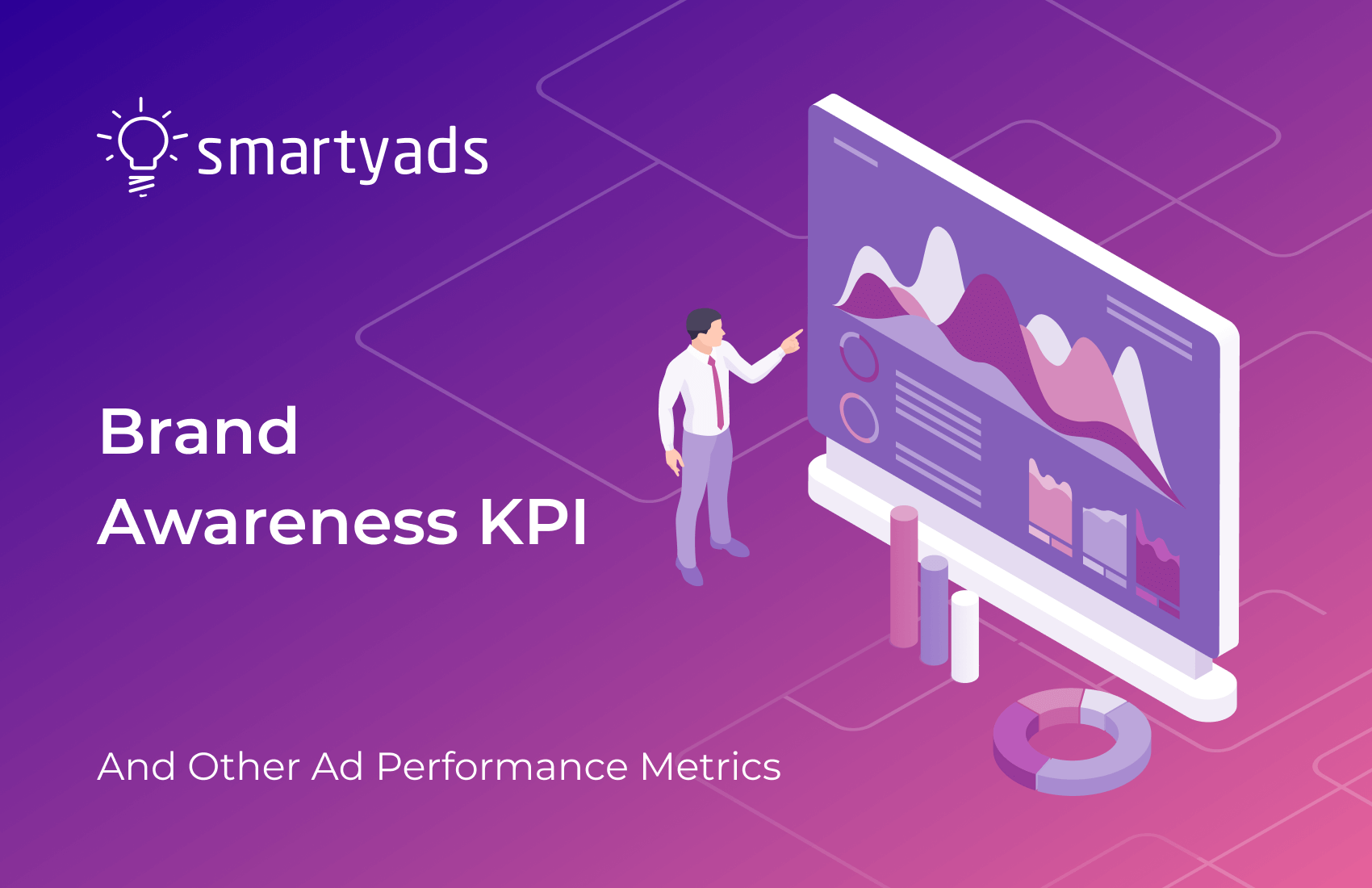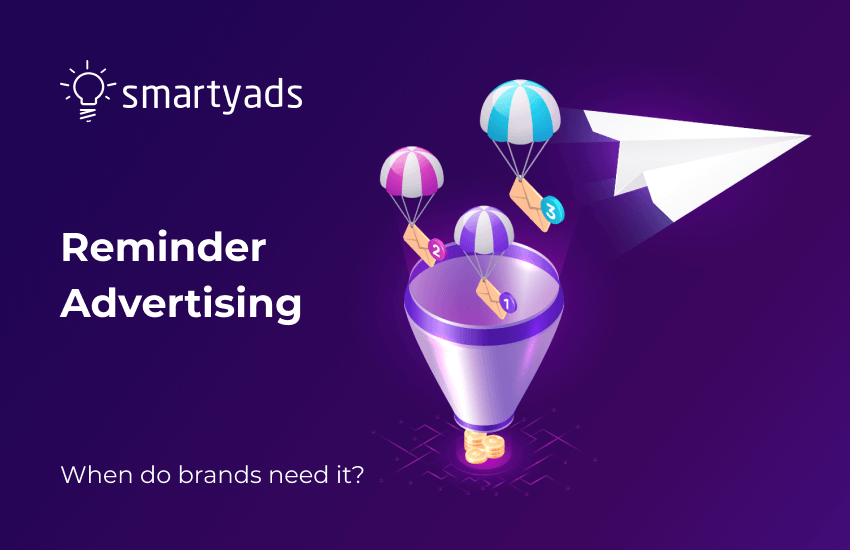Trying to run an ad campaign solo these days? That’s either brave or wildly optimistic. What used to be a fairly straightforward dynamic between publishers and advertisers has evolved into a complex, data-driven dance. The once straightforward relationship between publishers and advertisers has turned into something closer to a strategic chess match—with algorithms, data wars, and the occasional turf battle over CPMs.
Of course, it's not all chaos. We’ve got cutting-edge platforms, machine learning, and more dashboards than any human truly needs, all promising to make the collaboration smoother (or at least more trackable). Publishers chase monetization, advertisers chase conversions, and somewhere in between—ideally—a well-placed banner finds its audience.
So, let’s take a closer look at how these two creatures of the digital ad jungle operate, what roles they play, and how they manage to (mostly) work together without setting the internet on fire.

What is an ad publisher?
In the digital advertising ecosystem, the advertising publisher operates as an affiliate or reseller of inventory—whether it’s a website, an app, or any other user-facing medium. Their core responsibility? Attracting high-quality, engaged users and serving as a crucial link in delivering performance-driven ad campaigns.
A publisher’s marketing strategy isn’t just background noise—it’s a defining factor in campaign success. After all, even the most sophisticated ad creative won’t perform without quality traffic. Publishers help connect brands to the right audience, at the right time, often turning impressions into conversions with surprising efficiency (when done well, of course).
Things get even more interesting when a publisher promotes their own product—say, an app. In this case, they’re both publisher and advertiser, running campaigns to drive installs while essentially renting their own media real estate. Efficient? Yes. Slightly meta? Absolutely.
It’s also worth noting that not every media seller is a publisher in the classic sense. Some operate as intermediaries— resellers or sub-publishers—who broker inventory access rather than own it. Think of them as the ad tech world’s version of commercial real estate agents: helpful, but a few steps removed from the source.
How do publisher earn money?
While many publishers now offer their inventory via automated, programmatic platforms, there are still those who prefer the old-school, manual route. This involves direct outreach, negotiation over pricing and volumes, and the slow, anticipatory wait for the ad to finally go live. Not the fastest path—but sometimes, oddly satisfying.
In short, publishers do a lot more than just “serve ads.” They shape campaigns from the ground up—sometimes while wearing more than one hat.
However, today publishers are able to monetize inventory thanks to effective ad formats and ad monetization solutions. Programmatic is a model that helps to automate transactions fully avoiding manual manipulations, price discussions, or signing contracts. Automation improves efficiency by reducing costs and improving the quality of ad campaigns. How it is done we will discuss further in the article.
What is the publisher’s KPI? eCPM is the main metric used by publishers to determine the effectiveness of monetization. The higher it is the better are the outcomes for the publishers.
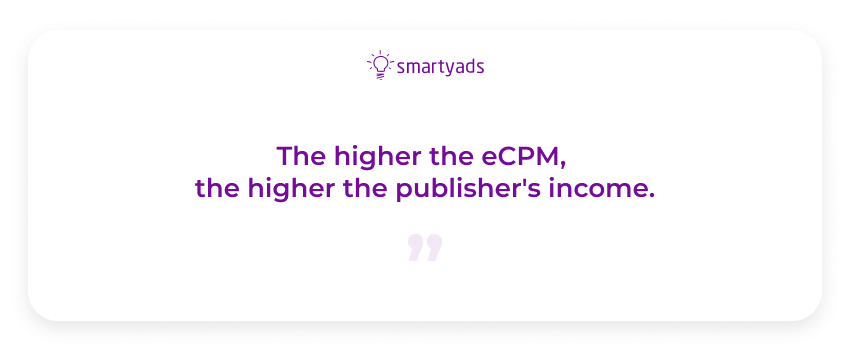
For instance, during the one ad campaign, the advertiser pays 10 dollars for 2 000 impressions. During the other $12 for 3 000 impressions. In this case, the publisher makes total revenue of $22 per 5 000 impressions. The eCPM calculation here: ($22/ 5 000) x 1 000 = $4,4. To dig deeper into the subject, read more in the article ‘what is eCMP and how to calculate it?’.
What is an advertiser?
Right after ad publishers, another link appears - media buyers (advertising agencies, advertisers, or brands). Advertisers rely on publisher advertisement to sell the product.
At some point, It was no longer enough for advertisers to purchase ad placements manually. They wanted to get to the audience that was looking exactly for their product. Here’s when ad networks and programmatic demand-side popped in. These platforms were able to determine the target audience, target according to interests and demographic characteristics of users. Publisher ads became more personalized.
On the supply side, SSP platforms have appeared. They allowed publishers to set the conditions for the inventory sale - the minimal price per impression, ad format, size, etc. With SSPs, ad publishers got the opportunity to monetize sites and apps automatically. Advertising publisher this way got access to the vast pool of advertisers globally.
How do advertisers actually pay for ad inventory? Well, in digital advertising, there’s no one-size-fits-all price tag. Instead, advertisers choose from a variety of payment models—each with its own strengths, weaknesses, and quirks. The two most common? Cost per mille (CPM) and cost per click (CPC).
In the CPM model, advertisers pay for every 1,000 impressions their ad receives—regardless of whether users click on it. It's the go-to choice for branding campaigns, where visibility and reach matter more than immediate action. If you’re launching a new product or trying to plant your logo in the minds of the masses, CPM is a solid bet. Bonus: it’s typically more budget-friendly than CPC, since you’re not paying for each and every click—just the chance to be seen.
How do advertisers earn money?
But don’t let CPM’s branding label fool you—performance marketers use it too, especially when the creative is strong and the audience targeting is on point. A clever ad in a high-traffic environment can generate a healthy number of clicks without paying CPC rates.
Let’s run a quick (and slightly simplified) example: suppose an advertiser has a $10 budget. Under a CPC model, if each click costs $0.20, that budget gives them 50 clicks—once those clicks are reached, the campaign ends. Under CPM, that same $10 might buy 1,000 impressions. If the ad is compelling and click-worthy, there’s potential for far more than 50 clicks, at no additional cost.
Of course, that’s the theory. In practice, click-through rates (CTR) can vary wildly. But in the right hands—and with the right message—CPM can deliver surprisingly efficient results. Just don’t expect miracles from a dull banner ad buried at the bottom of the page. Even programmatic magic has its limits.

Difference between ad publisher and advertiser and their working platforms
Advertiser vs Publisher: Extended Comparison
| Category | Advertiser | Publisher |
| Primary Goal | Promote products/services and drive conversions | Monetize content or platform by displaying ads |
| Revenue Model | Ad creation tools, analytics platforms, targeting software | Publisher ad server, content management systems, audience analytics |
| Dependency | Relies on publishers to provide quality ad space | Relies on advertisers to supply engaging, relevant ads |
| Control Over Content | Full control over the ad’s message, style, and targeting | Limited to approving/rejecting ad types or networks |
| Performance Metrics | Click-through rate (CTR), conversion rate, ROI, cost-per-acquisition (CPA) | Page views, bounce rate, fill rate, revenue per thousand impressions (RPM) |
| User Relationship | Aims to capture attention and prompt action (often short-term) | Builds long-term relationships with audiences through content |
| Ad Quality Concern | Wants visibility on premium, relevant sites | Wants ads that won’t disrupt UX or harm reputation |
| Examples | Nike, Amazon, Spotify, and B2B SaaS companies | News websites, blogs, mobile apps, YouTube channels, forums |
| Key Challenge | Rising ad costs, audience targeting, ad fatigue | Balancing monetization with user experience |
So basically, we’ve discovered that the difference between publishers and advertisers is in their main function - the publisher monetizes inventory by selling placements for ads and the advertiser buys the inventory for ads.
Ad publishers and advertisers offer their inventory at SSPs, DSPs, and Ad Networks.
SSP
SSP (Sell Side Platform) has a range of optimization tools enabling publishers to conduct trades with a greater value for their inventory. So, what is a supply-side platform, and how does it serve publishers? On SSP the publisher sets the price floor and the requirements regarding the future ad campaign: ad types, resolutions, and formats that can be served at their inventory.
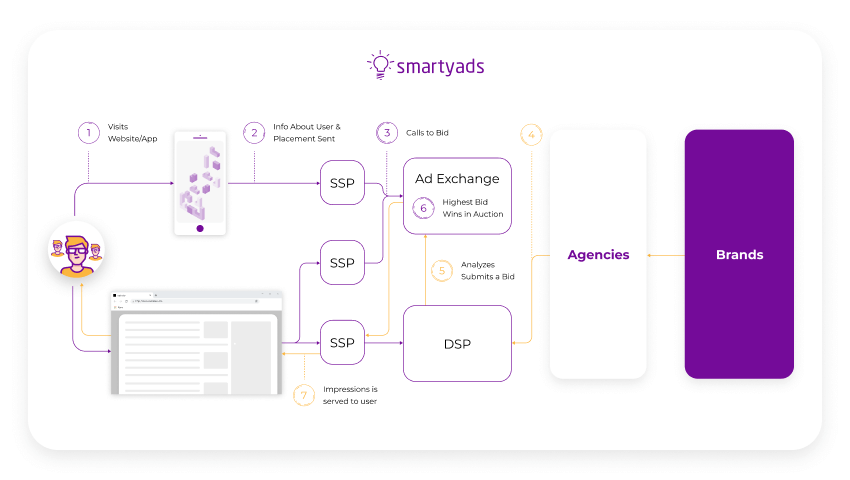
DSP
DSPs in turn, represent the interests of advertisers. So, what is a demand-side platform? The main purpose of DSP platforms is to buy an impression for the right target user at the lowest price. On DSPs, advertisers can buy inventory via RTB auctions as well as through direct deals, bypassing the auction.
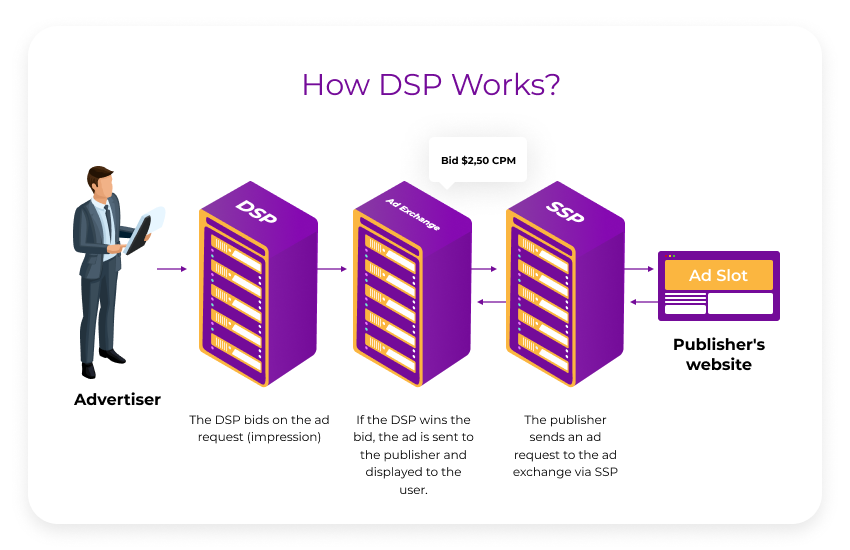
RTB
What is real-time bidding? RTB is an advertising technology that allows organizing an auction between sellers and buyers of advertising in real-time. The purpose of RTB is to organize real-time bidding and automate the process of media trading between publishers and advertisers. The main benefit of it is that with such automation publishers don’t worry about remnants. There’s always a chance to find the buyer for a particular inventory at the auction. Still, those sellers who have unique inventory often prefer to sell it to the buyers directly via programmatic direct (without RTB auction). This deal type is also beneficial as both advertisers and publishers know for sure where they place ads/who buys ads and at what price.
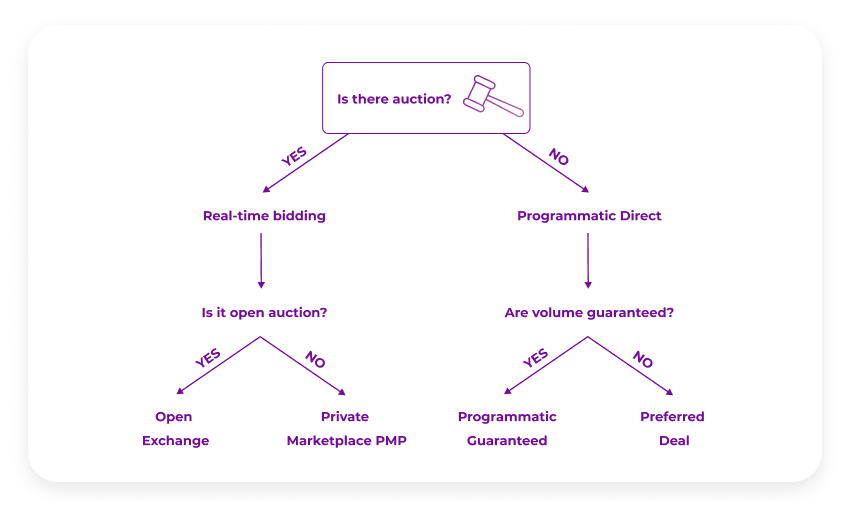
Ad networks and ad exchanges
Advertising exchange is a part of the vast programmatic ecosystem where advertisers and publishers can meet and trade directly (without registering at SSPs and DSP). An ad exchange is also responsible for maintaining real-time bidding auctions when DSPs are bidding on a particular impression. Meanwhile, an advertiser ad serve is in charge of storing ad creatives and delivering them to the viewers. Ad networks are pretty similar to ad exchanges in their functions. At the same time, ad networks and ad exchanges have minor differences.
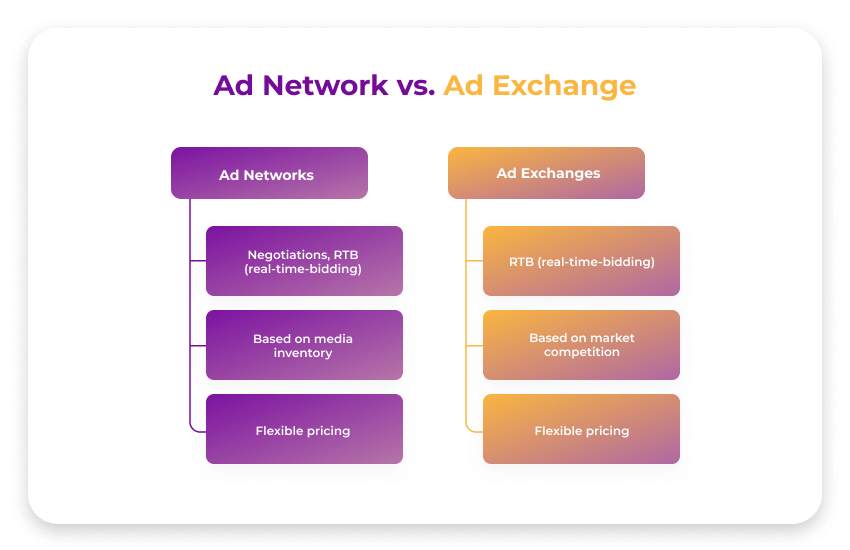
How can advertisers and publishers work together?
Targeting and ad serving process. When users browse sites, enter searches, download files, or make purchases, they leave digital footprints. The user here means a unique cookie-identifier, not a first name, last name, and passport data so that privacy is still respected. During the process of bidding on ad impressions, the DSP thoroughly analyzes such data about the user containing in the requests that come from SSPs. In case the characteristics of the user and the campaign criteria match, DSP offers a bid and takes part in the auction. The highest bidder wins the auction and the impression is then served to that particular user. This makes the process more simple, faster, and highly efficient. The costs are lowering while the quality of the ad campaign increases. The advantages are obvious, but still, let us highlight what it brings to the advertisers and publishers.
The benefits of programmatic for publishers and advertisers
- Flexible and accurate targeting. The accurate and flexible targeting is achieved through analyzing demographic data, zoning by IP address, keywords, and other available parameters. This way advertisers address the right audience. Meanwhile, the ads get relevant and don’t chase away visitors from the publisher’s website.
- Easier to buy and sell. Programmatic connects to the vast pool of global supply and demand. The programmatic platform connects advertisers to publishers and publishers to advertisers automatically. There’s no need to do anything manually (except for campaign setting/setting parameters for monetization).
- Variety of formats. Even though programmatic is most often associated with banner display ads, other formats are also available for advertisers. Video, audio, native formats for mobile and desktop are among those formats that generate the greatest share of ad spending. Publishers can also decide which formats they want to serve on their inventory (using SSP settings).
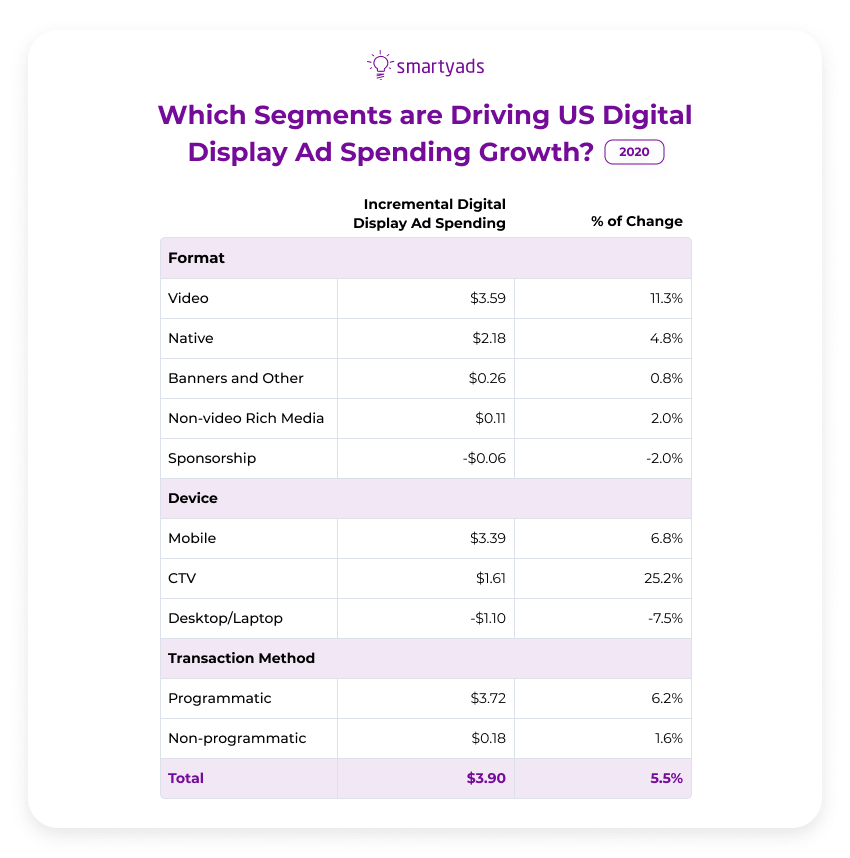
- Saving money and time. Although the CPM for different ad campaigns may vary (depending on geo and other conditions) running automated campaigns on self-serve DSPs is much cheaper than commissioning it to the agency. Publishers also save time as they don’t have to search for advertisers (and vice versa), negotiate prices, etc.
- Accountability and measurability. Both advertisers and publishers can evaluate the effectiveness of the advertising campaign/monetization inside of the programmatic platform they use (using reporting feature).
The last word
Online advertising isn’t rocket science—unless you try to run it without knowing who’s doing what. In its simplest form, publishers sell ad inventory, advertisers buy it. That’s the theory, anyway. In reality? It’s a fast-paced game of automation, data crunching, and trying not to overspend while chasing impressions.
Programmatic advertising stepped in like a well-dressed mediator at a chaotic marketplace, bringing order (and algorithms). In 2024 alone, programmatic accounted for the lion’s share of the $691 billion digital ad spend—a number that grows faster than your average campaign budget.
Tools like SmartyAds SSP are what make modern monetization not just possible, but profitable. Publishers finally have the wheel—setting floor prices, picking formats that don’t wreck UX, and, dare I say, making some decent revenue while they’re at it.
So no, online advertising isn’t inherently tricky. But with the right platform, publishers can stop just surviving—and start optimizing like pros. Monetize smarter, not harder. Or at least with fewer headaches.




